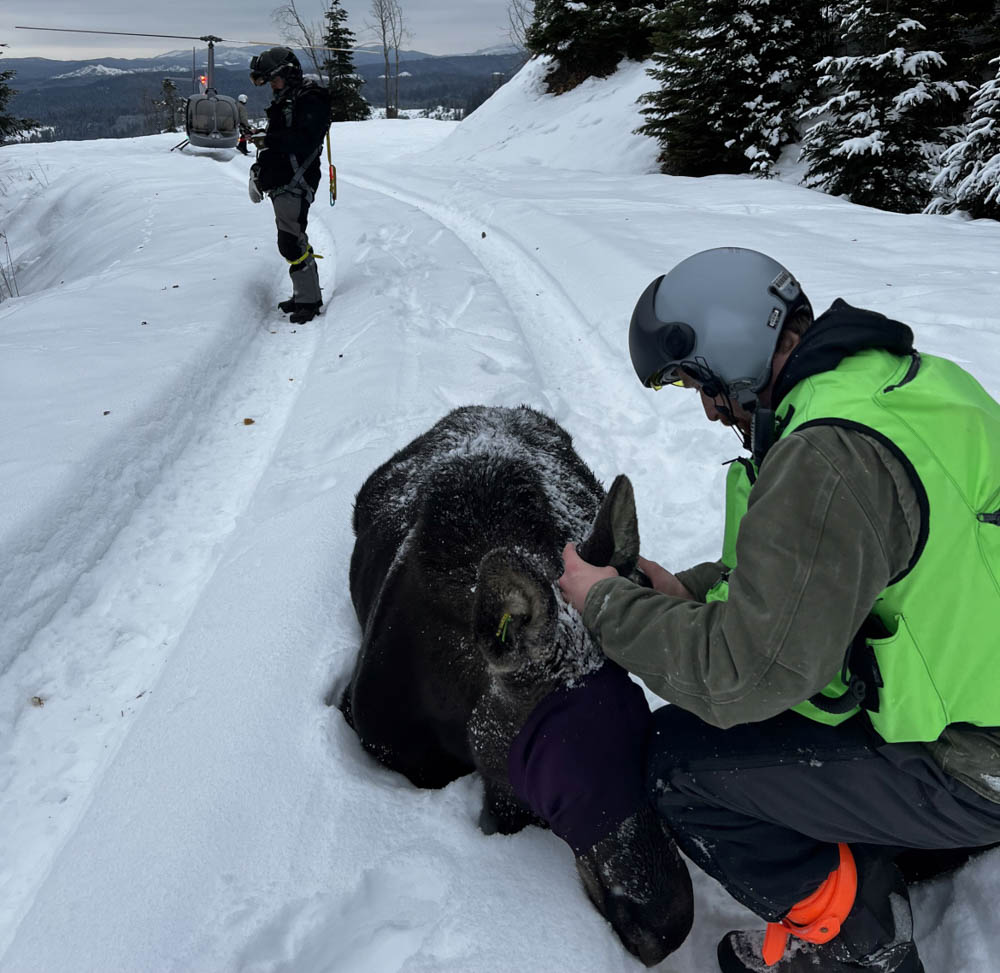Below is a news release from the Idaho Department of Fish and Game.
To most folks, the notion of riding in a helicopter to locate, capture and place a GPS collar on a deer, elk or moose seems like something only seen in movies or nature documentaries. For many of our staff, it’s another day on the job, and it’s all done with the goal of understanding and managing big game populations to provide continued hunting opportunities for sportsmen.
When asked why the information is important, Barb Moore, Regional Wildlife Biologist in the Panhandle Region replied, “When an animal has a collar on it, we learn so much about habitats it uses, when and where it moves and if it dies, what caused it to die. All of this allows us to make informed decisions when it comes to season setting, tag numbers and predator management.”
A recent example of how information gained from collars guided season setting and tag numbers is the general cow season on or within one mile of private land in the Panhandle.
“From our collaring information, we learned that front-country elk populations, which reside mostly on private land, have higher survival rates than their back-country counterparts, which live mostly on public land. As a result, front-country elk populations are better equipped to withstand more cow harvest,” Moore explained.
Here in the Panhandle Region, collars will soon be deployed in Units 1 and 6, with a particular focus on moose calves beginning Dec. 19. Collars will also be put on elk calves in those units.
Why focus on moose calves, you may be asking? Collar data on moose cows and calves over the past three years have indicated that across the state, survival of adult cow moose is around 90%. The story is quite different for moose calves who survive at a much lower rate, so our staff are trying to understand why that is. Getting collars out this year will be a big part of answering that question.
Mark Hurley, Principal Wildlife Research Biologist, said, “The biggest piece of information we are missing relative to declines in moose populations is how well calves survive from 6 to 12 months of age. If we can understand what happens in that six-month time window, we hope it will shed some light onto what is limiting moose populations in Idaho.”
Biologists in Region 1 are planning to deploy around 50 collars between moose and elk calves this year. Getting collars out isn’t easy and doesn’t always go according to plan. Depending on weather conditions, the effort may take several days and up to a week, so if you see or hear a chopper in the mountains, you know our staff are still at it!
(Photo credit: Idaho Department of Fish and Game)
